For many years vehicular air conditioning ceased to be a luxury to be a necessity for various factors. Three experts in the field evaluate some relevant aspects of these systems today. by Héctor Gómez Pérez
A vehicular air conditioning system was for many an expensive luxury until several years ago. Currently it is a need that is included within the characteristics of the vast majority of vehicles and its need was determined by factors as diverse as safety and the same climatic changes in the region.
In many cities in Latin America: Cartagena de Indias in Colombia, Rio de Janeiro in Brazil or Panama City, to give just a few examples of hot cities in the region, a journey in a car that does not have air conditioning can become a real ordeal for the driver and his passengers, without counting the problems of mobility or insecurity of some other cities that aggravate the inconvenience and that force to keep the windows up to avoid setbacks.
ACR Latin America wanted to talk to three experts in the field to learn about the trends, the changes that have been implemented and the horizons that are glimpsed at the turn of a few years for these systems. The group was formed by Jorge Colaço, management advisor of Recigases Ambiental de Refrigeración de Sao Paulo, Brazil; John Jairo Rivera, manager of Tecnoaires de Cali, Colombia, and Ignacio Gabriel Corella, general manager of Ceksa Autoclimas de México. They discussed this important area within ventilation, especially the refrigerants that are used.
Gas substitution
Jorge Colaço was the first to be emphatic in pointing out that there is no refrigerant gas that does not affect the environment. Efforts have definitely been made to use gases that do not threaten the ozone layer, although almost all have GWM (Global Warming Potential).
The first big step has been the replacement of R-12 by R-134a in vehicular air conditioning systems, although Rivera points out that there are still things to be done to address this issue by noting that "the issue of the replacement of refrigerants to date I think is not resolved, since R-12 was replaced by R-134a, which does not damage the ozone layer, but otherwise produces global warming. There is a replacement called HC12 and it is made from hydrocarbons, the strange thing is that it is a refrigerant produced in the United States but I do not understand why it has not been marketed in Colombia and neighboring countries. "
Ignacio Corella thinks that what is being experienced at the moment is something very similar to what happened in 1992 when the counterclaim was given to R-134a gas. "R-134a gas was highly questioned at first, however it already enjoys full acceptance. Tests are currently being carried out with other mixtures and with CO2, although the latter involves handling dangerously high pressures. At the moment it is not a cause for alert or concern to change refrigerant gas for mobile units, "said Corella.
Commitment of the parties
One aspect in which the three guests agreed is that there is still a lack of awareness of the issue of environmental care on the part of manufacturers and users of vehicular ventilation systems. On the one hand, Rivera said that although there are certain regulations for manufacturers in the production of vehicles and their accessories, even this commitment is null among users and notes that "only some people value the service provided by specialized service workshops in recovery issues before a system is completely discharged when cooling problems arise. There is no awareness in the fact of not allowing mixing of refrigerants, that the labor is qualified, the use of service workshops that have their personnel trained for the handling of polluting substances and so on."
Colaço believes that the issue goes through information factors and gives an example to illustrate the matter: "we all know that more oil in some engine device does not necessarily improve its lubrication, but nobody cares about the amount of gas in the air conditioning system. Worse still many believe that quantity can be measured by pressure."
Corella for his part thinks that the issue is more on the side of legislation. "As long as there is no strong legislation on the subject as it happens in the United States, Canada or Australia, both manufacturers and consumers will omit any procedure that involves cost or loss of time. Strict legislation is necessary or give more authority to government entities responsible for protecting the environment," he noted.
Trends and realities
Currently the most used gas in vehicular cooling systems is R-134a and it is of the utmost importance to take into account relevant aspects in the systems operated with this refrigerant such as thermodynamic properties, material compatibility and component selection. Also that R-134a refrigerants should not be mixed with mineral oils or lubricants with alkalibenzene.
Continuing with his previous idea, Colaço states that manufacturers should include in the vehicle manuals the amount of gas that must be put into the system, in the same way that the amounts of oil or radiator fluid are included. It also considers that within these systems the type of oil used in the compressor is fundamental. "In Brazil they use oil for refrigerators, which ends up damaging the compressor and since this takes a few months, the user does not realize until long after they put the wrong oil into the system," Colaço said.
As it was well said from the beginning, vehicular air conditioning ceased to be an exclusive luxury of a few, to be a need of the vast majority. This has made it possible to be a factory element of the vehicle, which has led to much better performance of the system by correcting the two typical problems of yesteryear: overheating and excessive fuel consumption.
Among the current characteristics, it stands out that they are automated systems, in which the levels of acoustics generated by the speeds reached by the air have been substantially reduced and the circulation of the air and the obtaining of thermal comfort have been improved.
Now if we talk about a good maintenance service of these systems, Colaço considers that more than a matter of intuition, the technician or mechanic who repairs or maintains them should be equipped with: a gas collector or recycler, have whenever possible a system of detection of losses by ultraviolet, offer a good vacuum and a non-contact thermometer.
The three experts consider that vehicular air conditioning systems are widely used in the vast majority of Latin America, although Colaço provides a relevant fact: "In terms of numbers Brazil is the country that uses them the most, but if we take into account the relationship with the population I think that Colombia, Peru and Venezuela should be at a very high percentage."
No thoughts on “Vehicular air conditioning: a necessity with environmental commitment”
• If you're already registered, please log in first. Your email will not be published.
-
Participate in the CALA AWARDS 2024 and highlight your HVAC/R project!
 Latin America. The call for applications for the prestigious CALA AWARDS 2024 is now open, which will award the Best HVAC/R Installation in Latin America. This recognition...
Latin America. The call for applications for the prestigious CALA AWARDS 2024 is now open, which will award the Best HVAC/R Installation in Latin America. This recognition... -
Top 10 logistics and refrigerated storage providers in LATAM 2024
 International. The Global Cold Chain Alliance (GCCA) released the 2024 version of the annual Global Top 25 list of its largest temperature-controlled storage and logistics...
International. The Global Cold Chain Alliance (GCCA) released the 2024 version of the annual Global Top 25 list of its largest temperature-controlled storage and logistics... -
ASHRAE and AHRI publish joint ANSI on commercial boilers
 International. As part of a Joint Sponsorship Agreement, ASHRAE and AHRI have published Standard ANSI/ASHRAE/AHRI 155-2024, Test Method for the Qualification of Commercial...
International. As part of a Joint Sponsorship Agreement, ASHRAE and AHRI have published Standard ANSI/ASHRAE/AHRI 155-2024, Test Method for the Qualification of Commercial... -
Honeywell and Bosch collaborate on low-GWP solutions
 International. Honeywell announced that Bosch's new line of heat pumps will incorporate Honeywell's energy-efficient Solstice refrigerant.
International. Honeywell announced that Bosch's new line of heat pumps will incorporate Honeywell's energy-efficient Solstice refrigerant. -
Carrier upgrades AquaSnap 30MP with lower GWP controls and refrigerant
 International. Carrier said it is updating one of its most compact indoor coolers, the AquaSnap 30MP water-cooled scroll cooler, to make it more environmentally responsible...
International. Carrier said it is updating one of its most compact indoor coolers, the AquaSnap 30MP water-cooled scroll cooler, to make it more environmentally responsible... -
Magnetic cooling could reduce emissions fom home appliances
 International. This is according to the NGO Global Energy Association, based on a study by the Federal Research Center of the Russian Academy of Sciences in Dagestan, which...
International. This is according to the NGO Global Energy Association, based on a study by the Federal Research Center of the Russian Academy of Sciences in Dagestan, which... -
Sigman carries out protocol acts in Quito and Guayaquil for its 20th anniversary
 Ecuador. The Sigman company held two events in the two main cities of Ecuador, on the occasion of its first two decades of business life.
Ecuador. The Sigman company held two events in the two main cities of Ecuador, on the occasion of its first two decades of business life. -
Danfoss unveils a high-pressure ceramic pump
 International. The manufacturer Danfoss took advantage of its participation in the ALADYR 2024 International Congress, which took place on April 17 and 18 in Mexico, to...
International. The manufacturer Danfoss took advantage of its participation in the ALADYR 2024 International Congress, which took place on April 17 and 18 in Mexico, to... -
Armstrong celebrates its 90th anniversary this month
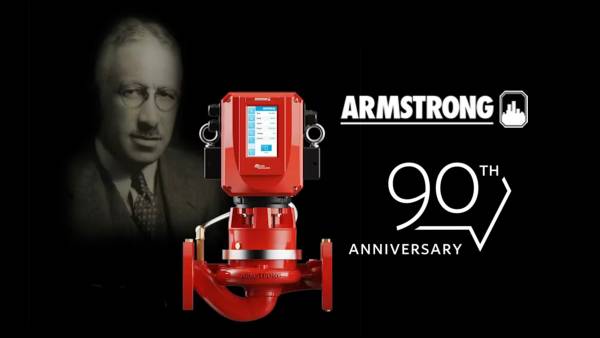 International. Since its founding in 1934, Armstrong Fluid Technology has overcome challenges as significant as the Great Depression of 1929. Today it is a benchmark company...
International. Since its founding in 1934, Armstrong Fluid Technology has overcome challenges as significant as the Great Depression of 1929. Today it is a benchmark company... -
Daikin opens R&D offices at the headquarters of a Mexican university
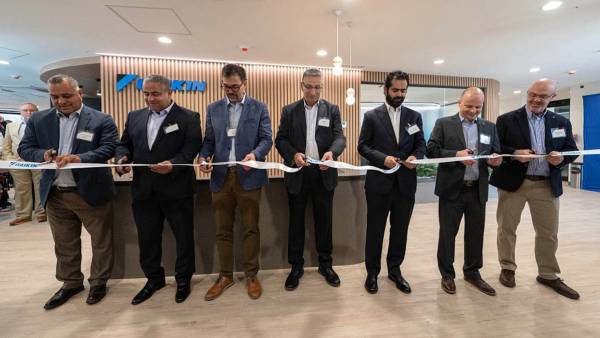 Mexico. In collaboration with Tecnológico de Monterrey, San Luis Campus, Daikin celebrated the inauguration of its new offices in San Luis Potosí. This represents a...
Mexico. In collaboration with Tecnológico de Monterrey, San Luis Campus, Daikin celebrated the inauguration of its new offices in San Luis Potosí. This represents a... -
Soler & Palau acquires United Enertech
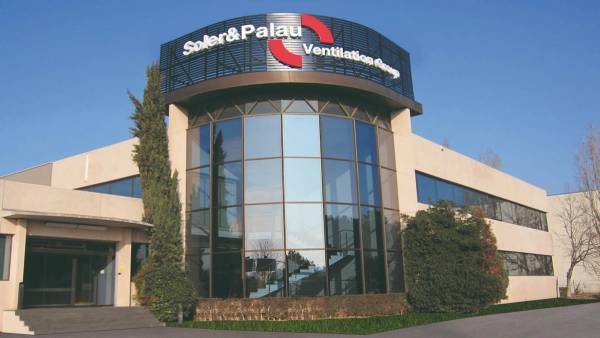 International. Soler & Palau Ventilation Group (S&P) announced that it has completed the acquisition of United Enertech Corp, Air Performance LLC, Air Conditioning...
International. Soler & Palau Ventilation Group (S&P) announced that it has completed the acquisition of United Enertech Corp, Air Performance LLC, Air Conditioning... -
Epta sells its cold room business, Misa
 International. With the aim of focusing on its core business of commercial refrigeration, the company Epta announced its new agreement with Purever Industries for the sale...
International. With the aim of focusing on its core business of commercial refrigeration, the company Epta announced its new agreement with Purever Industries for the sale... -
Copeland will participate in the Chilean Global Cherry Summit 2024
 Chile. The manufacturer Copeland announced that during the event it will promote products aimed at the control, tracking and security of cargo in the cold chain.
Chile. The manufacturer Copeland announced that during the event it will promote products aimed at the control, tracking and security of cargo in the cold chain. -
Ziehl-Abegg obtains Eurovent Certification
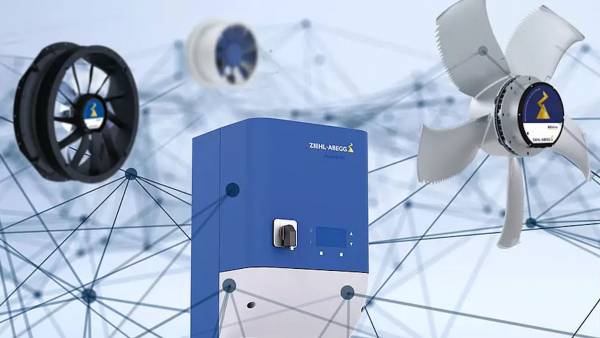 International. Ziehl-Abegg was the first fan manufacturer to obtain the new certification, which evaluates equipment intended for air handling units (AHUs).
International. Ziehl-Abegg was the first fan manufacturer to obtain the new certification, which evaluates equipment intended for air handling units (AHUs). -
Intersam examines the ACR outlook for the rest of 2024
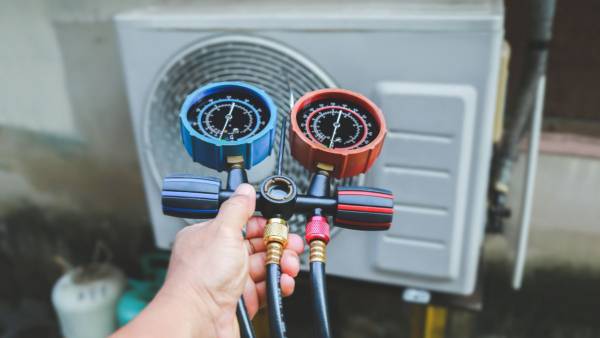 International. According to the firm Intersam, the previous year marked a milestone for the HVAC industry, since in that period its market reached a value of around US...
International. According to the firm Intersam, the previous year marked a milestone for the HVAC industry, since in that period its market reached a value of around US...









Leave your comment